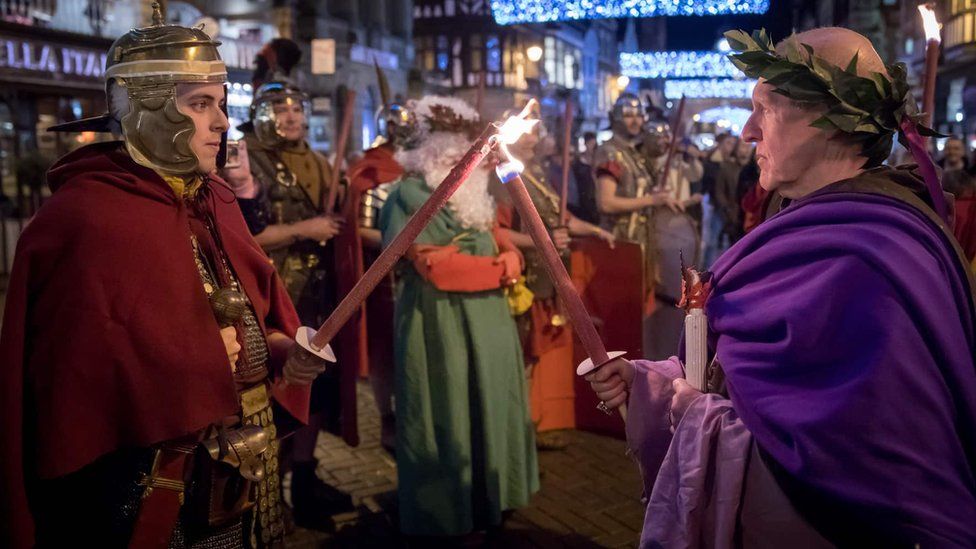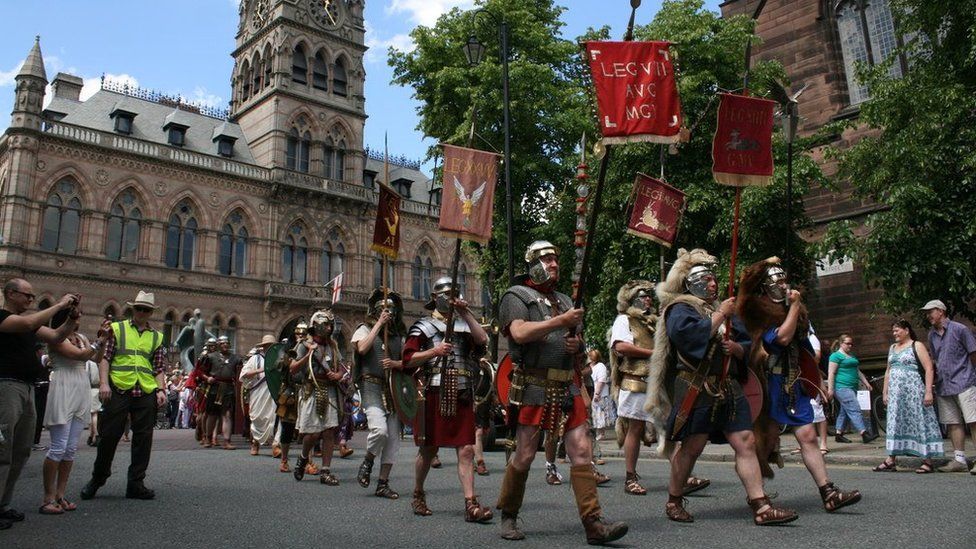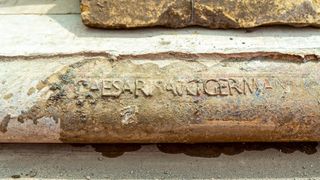Chester: The city which still celebrates Saturnalia
December brings festivities to many of England's cities, but for one, it is a chance to rejoice in more than one set of 2,000-year-old celebrations.
Every year, a week or so before Christmas, Chester's streets are filled with the same sights, sounds and smells that have marked Saturnalia in the city since its days as the Roman city of Deva Victrix.
The festival, which English Heritage (EH) said honoured Saturn, the Roman god of farming and harvest, was one of the ancient empire's most popular celebrations.
EH said it was originally a single-day event on 17 December, but its popularity saw the festivities stretch over time and eventually last until 23 December.
The organisation said Romans usually adhered to "very strict societal rules, and everyone knew their place", but during Saturnalia, the rules were "set aside, and even slaves, who had hard lives with little time off, could relax and have fun".
It saw gift-giving and excessive eating and drinking, traditions that continued when it was replaced by Christmas after the fall of the Roman Empire, but in Chester, which was once Rome's largest fortress in Britain, more of it has survived into modern times.
But one moment does link it intrinsically to Rome, as the parade always begins with an actor voicing the words of Domitian, who was emperor when Deva Victrix was founded.
"Let none of you be mistaken, the Romans are still here, at certain times of the year you will see us marching once more through our fortress," he tells the crowd.
"Remember who and what I am.
"I am a sword that sings in the dark. I am the sound of a legion marching to war.
"I am the axe that thuds into your skull. I am accuser, judge and executioner.
"I am Imperator. I am a living god. I am Caesar. I am Rome."
https://www.bbc.co.uk/news/uk-england-merseyside-67680824
I like the idea of murals (Glasgow has loads and you can do various trails) and these look fun!








